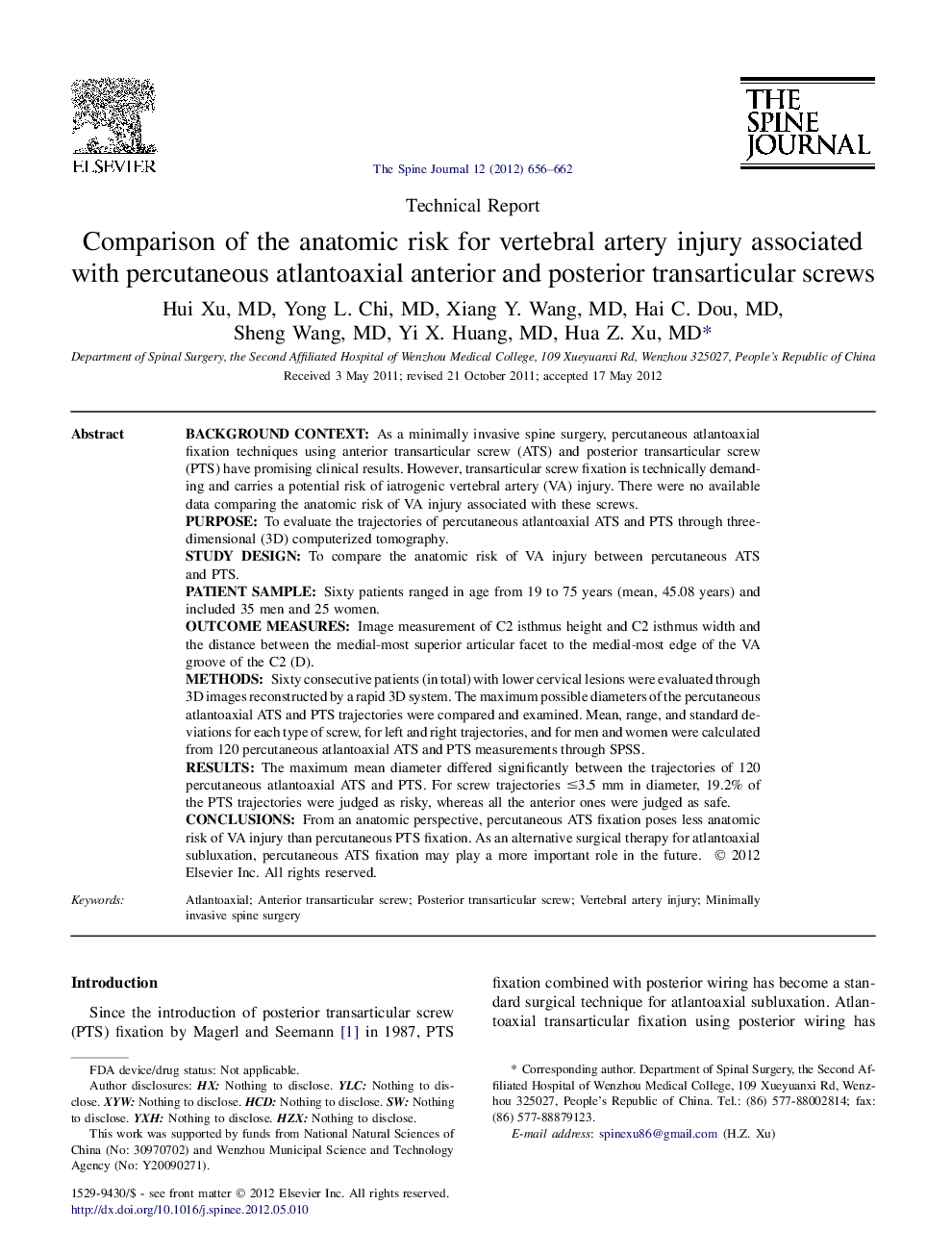| کد مقاله | کد نشریه | سال انتشار | مقاله انگلیسی | نسخه تمام متن |
|---|---|---|---|---|
| 4097585 | 1268593 | 2012 | 7 صفحه PDF | دانلود رایگان |

Background contextAs a minimally invasive spine surgery, percutaneous atlantoaxial fixation techniques using anterior transarticular screw (ATS) and posterior transarticular screw (PTS) have promising clinical results. However, transarticular screw fixation is technically demanding and carries a potential risk of iatrogenic vertebral artery (VA) injury. There were no available data comparing the anatomic risk of VA injury associated with these screws.PurposeTo evaluate the trajectories of percutaneous atlantoaxial ATS and PTS through three-dimensional (3D) computerized tomography.Study designTo compare the anatomic risk of VA injury between percutaneous ATS and PTS.Patient sampleSixty patients ranged in age from 19 to 75 years (mean, 45.08 years) and included 35 men and 25 women.Outcome measuresImage measurement of C2 isthmus height and C2 isthmus width and the distance between the medial-most superior articular facet to the medial-most edge of the VA groove of the C2 (D).MethodsSixty consecutive patients (in total) with lower cervical lesions were evaluated through 3D images reconstructed by a rapid 3D system. The maximum possible diameters of the percutaneous atlantoaxial ATS and PTS trajectories were compared and examined. Mean, range, and standard deviations for each type of screw, for left and right trajectories, and for men and women were calculated from 120 percutaneous atlantoaxial ATS and PTS measurements through SPSS.ResultsThe maximum mean diameter differed significantly between the trajectories of 120 percutaneous atlantoaxial ATS and PTS. For screw trajectories ≤3.5 mm in diameter, 19.2% of the PTS trajectories were judged as risky, whereas all the anterior ones were judged as safe.ConclusionsFrom an anatomic perspective, percutaneous ATS fixation poses less anatomic risk of VA injury than percutaneous PTS fixation. As an alternative surgical therapy for atlantoaxial subluxation, percutaneous ATS fixation may play a more important role in the future.
Journal: The Spine Journal - Volume 12, Issue 8, August 2012, Pages 656–662